October 10, 2019
 by Brandon Schmidt / October 10, 2019
by Brandon Schmidt / October 10, 2019

Is this the right choice?
Which product should I buy? Will this service really help me? Can I get a better deal elsewhere?
These are all thoughts running through the minds of your audience. If left unanswered, these questions can lead to someone avoiding the choice or, worse yet, choosing your competition.
How can you answer these questions, alleviate doubts, and inspire confidence that choosing YOUR brand is the right choice? Social proof.
In "Influence: The Psychology of Persuasion," Robert Cialdini lists social proof as one of the six fundamental psychological principles that shape human behavior, alongside consistency, reciprocation, authority, liking, and scarcity.
G2 defines social proof as: AKA as social influence, is a psychological phenomenon that assumes people take action based on the actions of others. In the context of marketing, it means that if everyone loves and buys one product, others are likely to jump on the bandwagon and purchase the same product.
This desire is hardwired into the subconscious of our minds; as social creatures, we want to follow the lead of others and make the same decisions they already made. Social proof feeds off of our desire to compare ourselves to others, conform to social norms, and seek the approval of the group.
5 types of social proof to include on your websiteBelow are five main categories of social proof that can be incorporated into your website, along with several examples of each. Before diving in, let's take a look at the importance of social proof and what benefits it can bring to you.
Marketers and copywriters throughout the years have recognized the power of social proof in swaying influence toward a product or service. Social proof can reduce the fear of uncertainty, positively reinforce the decision about to be made, and set up a brand as the most desirable in the field.
Social proof can be used in every part of the sales funnel:
One of the most common ways to create social proof is with individual examples. People want to see that others like them have made the right choice in choosing your brand.
Hearing the words of others can ease fears, set expectations, and inspire confidence that they are about to make the right choice. Here are some ways to highlight social proof from individuals.
The easiest way to add individual examples to your site is by adding customer reviews. Often, that is done by highlighting testimonials on the homepage or landing page.
However, they can be less powerful than other types of social proof because they are curated. Everyone knows you are only going to put the stellar reviews on your site instead of average or bad reviews.

Highlight individual stories of satisfied customers on your website.
What sets user-generated reviews apart from other types of social proof is that it is unfiltered; reviewers can describe the good, bad, and ugly about their experience with a company.
Because they are generated by others, and not the company, user-generated reviews can be seen as more authentic and have a greater impact on the buying decision. Eighty-two percent of buyers consider user-generated reviews to be extremely valuable.
Depending on your business and industry, you may have a different place for user-generated reviews.

User-generated reviews can include positive and negative feedback.
Case studies are a type of curated review that can go deeper into telling the customer’s story than a user-generated review.
Through photos, videos, and interactive elements, you can highlight how your company’s product or service helped your customers solve their challenges.
Case studies are a great option for selling a complex or expensive product or service.
That’s why they are popular for B2B and expensive B2C services, like home remodeling contractors.
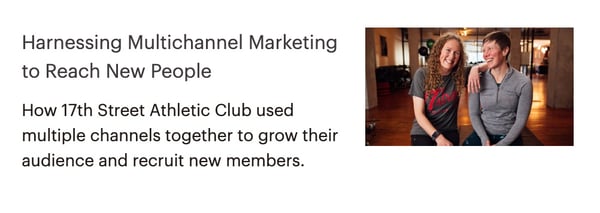
MailChimp shares the successes of its customers with all.
What’s better than following the advice of one person? Following the advice of a bunch of people.
The wisdom of the crowds can have significant sway on us. You might be able to explain away individual testimonies as having unique tastes or are biased, but it gets harder to dismiss social proof when hundreds or thousands of people are saying the same thing.
Social proof from the crowd works on a person’s subconscious in two ways.
| Most people don’t want to be the only person doing something, so it gives confirmation that other people are doing the same thing. |
| Crowd social proof can create a sense of FOMO and cause people to make a decision to avoid being the last one to do so. |
Here are some examples of using crowd wisdom as social proof:
An important component of user-generated reviews that we didn’t mention above is star ratings. That’s because people look at the average star rating as a cumulative overall review of a product/company. A five-star review from one person is less impressive than a five-star average from hundreds of people.
 If 10k people love the Franklin Institute, I’m sure you will, too.
If 10k people love the Franklin Institute, I’m sure you will, too.
Highlight impressive numbers about your product, service, or company.
This can vary drastically based on industry: SaaS companies brag on the number of users, local businesses highlight the number of projects, and travel-based companies share how many visitors they host.
If you can, try to find numbers that would be important to your audience (for example, a consultant bragging about how much money they’ve helped companies save).
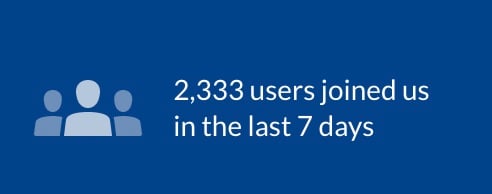 Clever microcopy on a SaaS signup form.
Clever microcopy on a SaaS signup form.
If your company tries to target customers geographically - whether that is a town, state, or across a continent - having a map of users or projects can visually showcase your customer base.
This especially works well for local service area businesses, manufacturers highlighting a dealer network, or an ISP showing off its WiFi network.
 Map of public WiFi access points hosted by Xfinity.
Map of public WiFi access points hosted by Xfinity.
Another form of social proof is to recognize the opinions of experts. If a person sees that someone with credentials, experience, or authority has recommended you, their perceived trust is passed on to your product or service.
Movies, theater productions, and high-end restaurants know that a critic’s review can make or break their reputation.
Getting a quote from an expert in your field can be a boost to your legitimacy and introduce you to new audiences; highlight these on your website.
 Received good press about your company? Be sure to add it to your website.
Received good press about your company? Be sure to add it to your website.
People want to know they are in good hands and that you are a company that is trustworthy, respected, and following all the best practices. You can reinforce this by displaying certifications, advanced training, or security protocols.
This can vary based on industry or site. For example, home service companies can display a seal of approval from a manufacturer, while B2B companies can list out government certifications and guidelines they follow.
 Home service companies like plumbers should display safety certifications.
Home service companies like plumbers should display safety certifications.
Are you one of the leaders in your field? Be sure to showcase that on your website.
Highlight the awards, memberships, and accolades you have received; these trust symbols may mean more to you than your customers, but it can still inspire confidence and set you apart from your competition.
 People want to know that the company they are hiring is trustworthy and reputable.
People want to know that the company they are hiring is trustworthy and reputable.
As a community, we can elevate certain people to celebrity status. Movie stars, musicians, artists, and cultural icons are all viewed in a different light than the rest of us, and when they endorse a product, we listen.
The rise of influencer marketing has given brands of all sizes the opportunity to add the social proof of endorsement to their websites and marketing efforts.
Even micro-influencers are accessible for smaller or niche-specific brands.
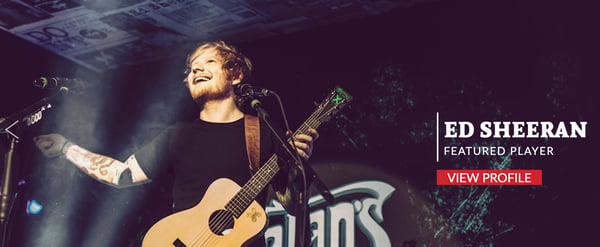 Martin Guitars prominently features Ed Sheeran on its website.
Martin Guitars prominently features Ed Sheeran on its website.
Celebrities don’t have to be people; B2B and SAAS products regularly highlight the large, well-known brands that use their services, providing instant credibility to users.
 Example of brag-worthy clients from G2’s homepage.
Example of brag-worthy clients from G2’s homepage.
The final type of social proof you can add to your site is the behavior of others. Slightly different than the crowd-based proof mentioned above, this is when a website makes recommendations based on the past behavior of others.
Popular in e-commerce and content platforms, people also viewed can guide your audience to the next logical product to view or article to read.
It can also give you valuable information into your audience’s behavior profile and what attracts them.

When looking for a jacket, Gap’s website shows several options.
Google is in the business of getting people the right information. That’s why you will frequently see people also asked sections in the search results; this helps narrow down the focus of the search to the essential questions and answers that people are looking for.
This works well for FAQ or customer service sections of a website.
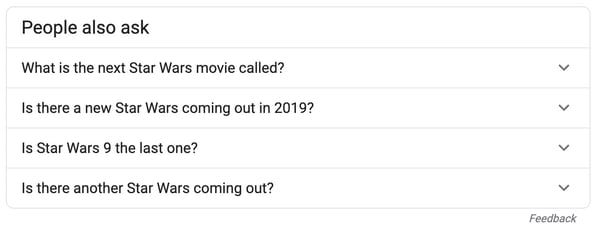
By following these examples of social proof on your website, you can continue to build trust with your audience, break down their barriers to purchase, and convert more of your website traffic into buyers.
Of course, moderation is best. Don’t fill up your website with too many social proofs. Otherwise, it can be seen as spammy and untrustworthy. Try out a few and find what types of social proof work best for your audience.
Get started using social proof to boost your audience's confidence in your brand today by finding the right product reviews software for your brand!
Brandon Schmidt is the director of digital strategy at
In a competitive business landscape, you have to find effective strategies that give you an...
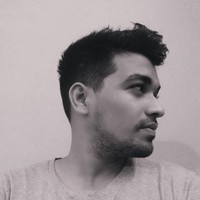 by Jagdish Purohit
by Jagdish Purohit
Given the choice between a higher-priced product with quality reviews and a lower-priced...
 by Krunal Vaghasiya
by Krunal Vaghasiya
If you're in a creative business and have ever created content, you know how important it is....
 by Slavica Grgic
by Slavica Grgic
In a competitive business landscape, you have to find effective strategies that give you an...
 by Jagdish Purohit
by Jagdish Purohit
Given the choice between a higher-priced product with quality reviews and a lower-priced...
 by Krunal Vaghasiya
by Krunal Vaghasiya


